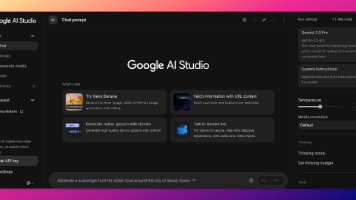AI新闻推荐:用户行为大数据解密
新闻推荐系统通过分析用户行为大数据,能够精准推送个性化内容。人工智能技术在这一过程中扮演关键角色,从数据采集、特征提取到模型训练,均依赖机器学习算法优化用户体验。用户兴趣可能随时间变化,序列模型如Transformer能捕捉动态偏好。通过持续迭代模型架构与数据处理流程,人工智能驱动的新闻推荐系统能实现更精准的用户兴趣匹配,同时保障内容生态的健康度。数据处理后生成用户-新闻交互矩阵,矩阵中每个元素表
人工智能在新闻推荐中的用户行为大数据应用
新闻推荐系统通过分析用户行为大数据,能够精准推送个性化内容。人工智能技术在这一过程中扮演关键角色,从数据采集、特征提取到模型训练,均依赖机器学习算法优化用户体验。
用户行为数据的采集与处理
用户行为数据包括点击、浏览时长、分享、评论等交互记录。这些数据通常以日志形式存储,需经过清洗和结构化处理。以下是使用Python解析用户行为日志的示例代码:
import pandas as pd
from datetime import datetime
def parse_user_logs(log_path):
# 读取原始日志
logs = pd.read_csv(log_path, sep='\t', names=['user_id', 'news_id', 'action', 'timestamp'])
# 时间戳转换
logs['timestamp'] = logs['timestamp'].apply(lambda x: datetime.fromtimestamp(int(x)))
# 行为类型编码(点击=1,分享=2,评论=3)
action_mapping = {'click': 1, 'share': 2, 'comment': 3}
logs['action_code'] = logs['action'].map(action_mapping)
return logs[['user_id', 'news_id', 'action_code', 'timestamp']]
数据处理后生成用户-新闻交互矩阵,矩阵中每个元素表示用户对某新闻的偏好强度。稀疏矩阵存储可节省计算资源:
from scipy.sparse import csr_matrix
def build_interaction_matrix(logs, user_index, news_index):
row = logs['user_id'].map(user_index).values
col = logs['news_id'].map(news_index).values
data = logs['action_code'].values # 权重由行为类型决定
return csr_matrix((data, (row, col)), shape=(len(user_index), len(news_index)))
基于深度学习的推荐模型
协同过滤(Collaborative Filtering)是传统推荐方法,但深度神经网络能更好捕捉非线性特征。以下是使用PyTorch实现的神经协同过滤(NCF)模型:
import torch
import torch.nn as nn
class NCF(nn.Module):
def __init__(self, num_users, num_items, embedding_dim=64):
super().__init__()
self.user_embedding = nn.Embedding(num_users, embedding_dim)
self.item_embedding = nn.Embedding(num_items, embedding_dim)
self.fc_layers = nn.Sequential(
nn.Linear(2*embedding_dim, 128),
nn.ReLU(),
nn.Linear(128, 64),
nn.ReLU()
)
self.output = nn.Linear(64, 1)
def forward(self, user_ids, item_ids):
user_vec = self.user_embedding(user_ids)
item_vec = self.item_embedding(item_ids)
concat = torch.cat([user_vec, item_vec], dim=-1)
features = self.fc_layers(concat)
return torch.sigmoid(self.output(features))
模型训练时需采用负采样策略,即对每个正样本(用户点击的新闻)随机采样未交互的新闻作为负样本:
def train_epoch(model, dataloader, optimizer, device):
model.train()
total_loss = 0
for batch in dataloader:
user_ids, pos_items, neg_items = batch
user_ids = user_ids.to(device)
pos_items = pos_items.to(device)
neg_items = neg_items.to(device)
# 计算正负样本得分
pos_scores = model(user_ids, pos_items)
neg_scores = model(user_ids, neg_items)
# 使用BPR损失函数
loss = -torch.log(torch.sigmoid(pos_scores - neg_scores)).mean()
optimizer.zero_grad()
loss.backward()
optimizer.step()
total_loss += loss.item()
return total_loss / len(dataloader)
实时推荐与动态兴趣建模
用户兴趣可能随时间变化,序列模型如Transformer能捕捉动态偏好。以下是基于Transformer的推荐模块代码片段:
class TransformerEncoder(nn.Module):
def __init__(self, dim, heads=4):
super().__init__()
self.attention = nn.MultiheadAttention(dim, heads)
self.norm = nn.LayerNorm(dim)
def forward(self, x):
# x: [seq_len, batch_size, dim]
attn_out, _ = self.attention(x, x, x)
return self.norm(x + attn_out)
class UserInterestModel(nn.Module):
def __init__(self, item_dim, num_layers=3):
super().__init__()
self.layers = nn.ModuleList([TransformerEncoder(item_dim) for _ in range(num_layers)])
self.time_embedding = nn.Embedding(24, item_dim) # 时间上下文编码
def forward(self, item_sequence, timestamps):
# item_sequence: [seq_len, batch_size, item_dim]
time_emb = self.time_embedding(timestamps).unsqueeze(0)
x = item_sequence + time_emb
for layer in self.layers:
x = layer(x)
return x[-1] # 返回最后时刻的用户表征
评估与AB测试框架
推荐效果评估需结合离线指标(如AUC、NDCG)和在线AB测试。离线评估代码示例:
from sklearn.metrics import roc_auc_score, ndcg_score
def evaluate(model, test_loader, device):
model.eval()
all_labels, all_scores = [], []
with torch.no_grad():
for user_ids, item_ids, labels in test_loader:
scores = model(user_ids.to(device), item_ids.to(device)).cpu()
all_labels.extend(labels.numpy())
all_scores.extend(scores.numpy())
auc = roc_auc_score(all_labels, all_scores)
ndcg = ndcg_score([all_labels], [all_scores])
return {'auc': auc, 'ndcg': ndcg}
在线AB测试需记录关键指标:
- 点击率(CTR)
- 用户停留时长
- 新闻多样性指数
冷启动解决方案
对于新用户或新新闻,可采用以下策略:
- 内容画像:利用NLP提取新闻关键词TF-IDF向量
from sklearn.feature_extraction.text import TfidfVectorizer tfidf = TfidfVectorizer(max_features=500) news_vectors = tfidf.fit_transform(news_texts) - 跨域推荐:从其他平台迁移用户画像
- 探索-利用(EE)策略:通过Bandit算法平衡推荐新颖性
技术挑战与优化方向
- 数据稀疏性:图神经网络(GNN)可挖掘用户-新闻二部图结构
- 可解释性:引入注意力机制可视化推荐理由
- 偏差消除:对抗训练减少点击数据中的位置偏差
通过持续迭代模型架构与数据处理流程,人工智能驱动的新闻推荐系统能实现更精准的用户兴趣匹配,同时保障内容生态的健康度。
更多推荐
 已为社区贡献12条内容
已为社区贡献12条内容







所有评论(0)